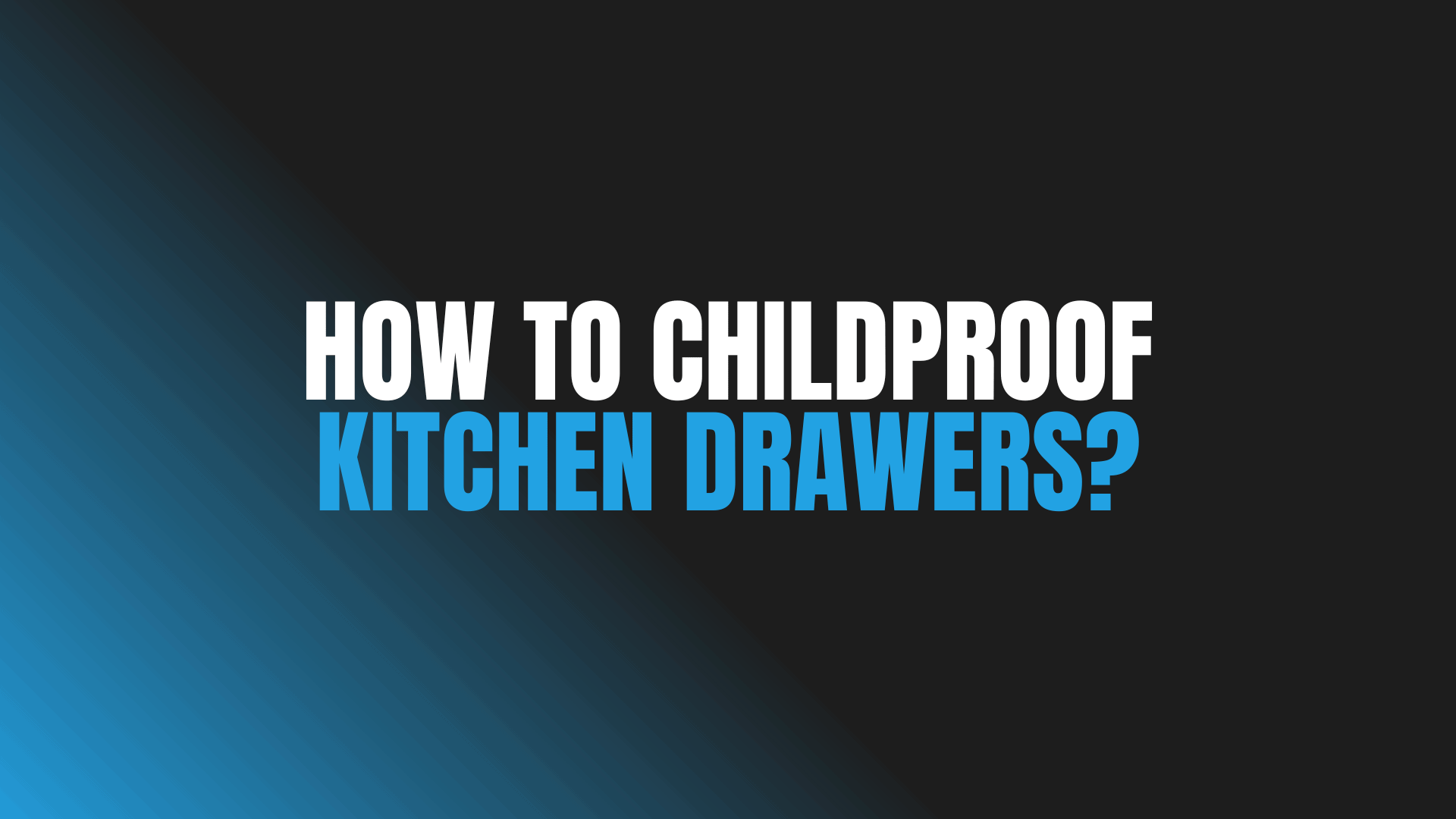
Question: How to Childproof Kitchen Drawers?
Answer: To childproof kitchen drawers use magnetic locks or adhesive latches inside drawers and cabinets. Adjustable straps work well for appliances and external handles.
Essential Kitchen Drawer Safety for Children
Curious toddlers explore their environment, especially kitchen drawers. These drawers often hold intriguing, yet potentially hazardous, items. This article provides effective strategies to create a safe kitchen for your child. Learn how to childproof kitchen drawers and prevent accidents.
Understanding the Risks in Kitchen Drawers
Kitchen drawers contain many items that pose risks to young children. Sharp objects like knives and peelers can cause cuts. Cleaning supplies often contain harmful chemicals. Plastic bags present a suffocation hazard. Even seemingly harmless items like utensils can become choking hazards for small children. Understanding these risks helps parents prioritize safety measures.
Children’s developmental stages influence the types of risks they face. Babies and toddlers explore with their mouths, making them vulnerable to choking hazards. As children grow, their curiosity and mobility increase, exposing them to sharp objects and chemical dangers. Recognizing these developmental changes informs appropriate childproofing strategies. A safe kitchen allows children to explore without unnecessary dangers.
Please visit the homepage to read more about Blue Kitchen Refacing
Related Article: At What Age Can Most Children Open Cabinets and Drawers?
Related Article: How to Keep My Baby Out of the Kitchen Cabinets?
Choosing the Right Locks for Your Drawers
Selecting the right locks depends on your specific needs and drawer styles. Consider the age and dexterity of your child. Younger children may require more secure locks. Evaluate the type of drawer and its contents. Drawers containing hazardous materials need stronger locks. Think about your personal preferences. Some people prefer hidden locks while others prioritize ease of use. The best lock for your kitchen combines security, convenience, and suitability for your child’s developmental stage.
Assess your kitchen drawers before purchasing locks. Measure the drawers to ensure compatibility with the chosen locks. Consider the material of the drawers. Some adhesives work better on certain surfaces. Evaluate the location of the drawers. Drawers near appliances might require specific lock types. Careful assessment helps you select the most effective locks. Proper installation ensures optimal safety.
Related Article: How to Childproof Kitchen Drawers?
Installing Childproof Locks Correctly
Proper installation is crucial for lock effectiveness. Carefully read the manufacturer’s instructions before starting. Clean the drawer surfaces thoroughly to ensure strong adhesion for adhesive locks. Use the correct tools for installation. Some locks require screws or anchors. Test the locks after installation to verify they function correctly. Ensure adults can easily open the locks while remaining inaccessible to children. Correct installation provides the best protection for your child.
Regularly check the locks for wear and tear. Replace any damaged locks immediately. Tighten screws or reapply adhesives as needed. Periodic maintenance ensures continued effectiveness. A proactive approach to safety minimizes risks. Consistent lock maintenance protects your child over time.
Beyond Locks: Additional Safety Tips for the Kitchen
While locks are essential, other safety measures enhance kitchen safety. Store dangerous items like knives, cleaning supplies, and medications out of reach in upper cabinets or locked pantries. Secure appliances with appliance locks or outlet covers. Keep appliance cords out of reach to prevent children from pulling them. Supervise children closely in the kitchen, especially while cooking. These additional steps create a safer environment.
Teach children about kitchen safety as they grow. Explain the dangers of certain items and why they should not play in drawers. Encourage children to ask for help when they need something from a drawer. Educating children about kitchen hazards empowers them to make safe choices. Combining physical safeguards with education provides comprehensive childproofing.
Conclusion
Childproofing kitchen drawers is crucial for every parent and caregiver. By understanding the risks associated with kitchen drawers and employing effective childproofing techniques, you can create a safe environment for your child to explore and learn. Remember to choose appropriate locks, install them correctly, and maintain them regularly. Combining locks with additional safety measures like storing hazardous items out of reach and educating children about kitchen safety ensures comprehensive protection.
Creating a safe kitchen is an ongoing process that requires attention and adaptation as your child grows. Regularly review your childproofing strategies and make adjustments as needed. A proactive approach to safety ensures your child’s well-being. Prioritizing safety provides peace of mind for parents and a secure environment for children to thrive.

Blue Malue Get in touch with Blue here.
